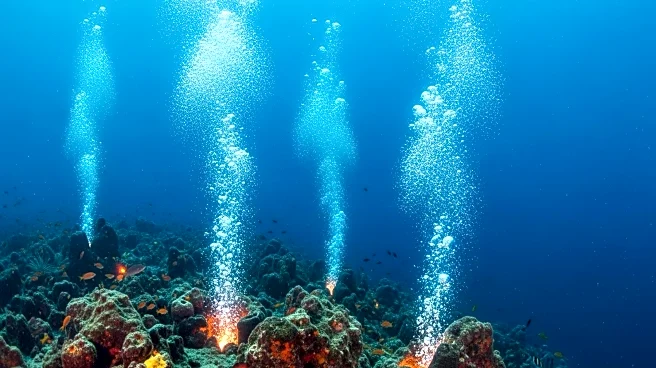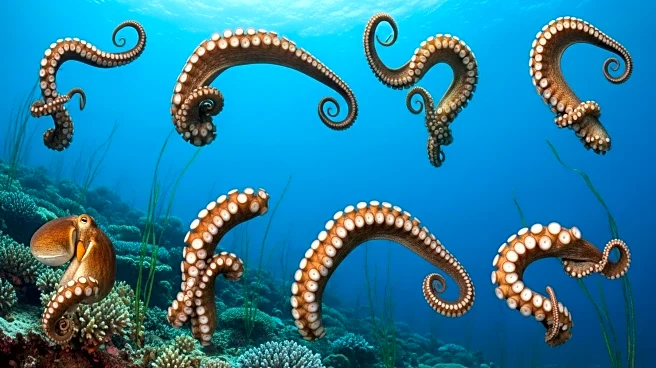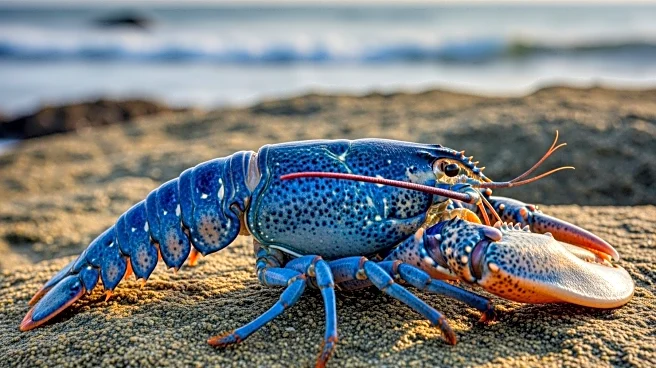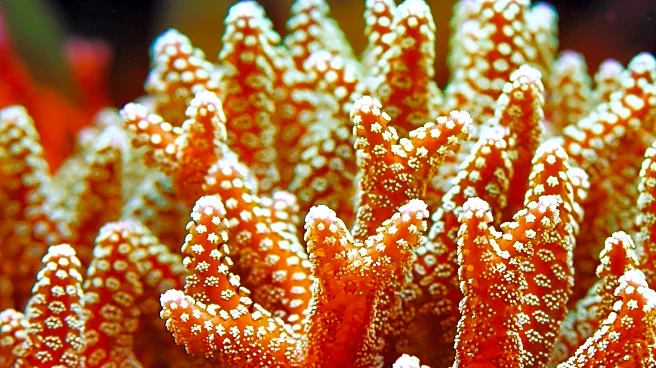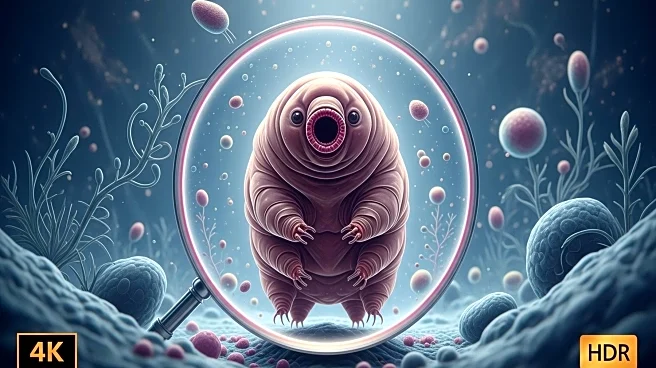What's Happening?
The deep-sea worm Paralvinella hessleri has been discovered to thrive in the extreme conditions of hydrothermal vents in the Pacific Ocean. This species survives by storing arsenic in its skin cells, which reacts with sulfide to form orpiment, a yellow-orange pigment. This adaptation allows the worm to withstand the toxic environment of the vents, where temperatures can reach up to 608 degrees Fahrenheit. The discovery sheds light on the unique survival strategies of deep-sea organisms.
Why It's Important?
The study of Paralvinella hessleri provides valuable insights into the adaptability of life in extreme environments. Understanding how these organisms survive in toxic conditions could have implications for biotechnology and the study of life's potential on other planets. The research highlights the resilience of marine life and the importance of preserving deep-sea ecosystems, which remain largely unexplored and vulnerable to human activities.
Beyond the Headlines
The discovery of P. hessleri's survival mechanism may inspire further research into bioremediation, where organisms are used to clean up toxic environments. The worm's ability to neutralize arsenic could lead to innovative solutions for managing pollution and environmental restoration.





